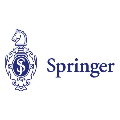计算机 | 高引SCI期刊专刊信息4条
计算机网络
Computer Communications
Special Issue on Deep learning for Intelligent IoT: Opportunities, Challenges and Solutions
全文截稿: 2019-09-30
影响因子: 2.613
CCF分类: C类
中科院JCR分区:
• 大类 : 工程技术 - 3区
• 小类 : 计算机:信息系统 - 3区
• 小类 : 工程:电子与电气 - 3区
• 小类 : 电信学 - 3区
网址: http://www.journals.elsevier.com/computer-communications
Future-generation wireless networks are required to support ultra-reliable and low-latency communications. In past few years, artificial intelligence (AI) flourished by advancements in machine learning (ML) more specifically in deep learning (DL) and reinforcement learning (RL) showing their value in a wide range of applications, where classification or regression problems play a pivotal role. One of the key-applications of future-generation wireless networks is the management of the Internet of things (IoT) infrastructures. The complex, heterogeneous and distributed nature of this type of systems leads many researchers and practitioners to explore the application of DL techniques to make IoT intelligent, reliable and highly performing. Forbes predicted that IoT industry will grow to $457 billion by 2020. Smart cities, smart grid, health and industrial IoT (IIoT) are the key contributors to this massive adaptation and growth. Specifically, the revolution known as Industry 4.0 takes advantage from the developments in the IoT field enormously.
IoT systems consist of a large number of distributed heterogeneous devices that generates consistent amount of data. Cleary, wireless solutions have a primary importance in this context as witnessed by the massive development of industrial (often low-cost) components that have been helping the actual implementation of this technology. Data harvested by the devices is progressively increasing in size and heterogeneity. Moreover, IoT network is diverse and complex in nature. Algorithms devised for networks with certain structured characteristics are not typically efficient once applied to IoT systems. Finally, IoT devices also possess limited computational, memory and energy resources so they heavily rely on edge and core networks for data handling, processing and analysis. As a consequence, DL-based edge and core devices are crucial to develop an intelligent and efficient resource management and network management and to improve the overall system performance. Indeed, the quantitative evaluation and optimization of IoT system is fundamental area of research: The wireless traffic is growing exponentially with the continuous increase of the number of IoT devices that generate massive short-packet transmissions over the wireless downlink/uplink. For these reasons, communication protocols also need to be adaptive to such a dynamic IoT environment in real time. With respect to ordinary wired and wireless networks, IoT networks usually require to be optimized in terms of their energy consumption and load-balancing strategies have to be devised to run the IoT devices for many years in a reliable way.
From the functional point of view, the heterogeneity of the IoT devices also raises interoperability concerns. The anomaly detection and defense is also one of the huge problems for the industry: protecting the infrastructure from malicious network attacks, unauthorized access and safeguarding the user privacy are fundamental, but at the same time challenging requirements. For example, the anomaly detection systems require to adapt themselves to unpredictable events in order to cater the largest class of cyber threats. Intelligent IoT requires to cope all the aforementioned enormous challenges. DL promises to solve such a diverse range of problems without human intervention.
This special issue aims to bring together the academia and industrial researchers to explore the opportunities of DL for IoT, study its impact on the solution of the solution of the aforementioned challenges and propose viable solutions. We solicit papers covering various topics of interest that include, but not limited to the following.
DL-based architecture and technologies for intelligent IoT
DL-based services for smart cities, grids and health for intelligent IoT
DL-based multimedia services for intelligent IoT
DL-based big data mining and analytics for intelligent IoT
DL-based applications for intelligent IoT
DL-based transport protocols for intelligent IoT
DL-based routing protocols for intelligent IoT
DL-based MAC protocols for intelligent IoT
DL-based radio duty cycling (RDC) for intelligent IoT
DL for IoT Edge devices
DL-based network anomaly detection and defense
计算机科学与技术
ISA Transactions
Special Issue on Prognostics and Health Management of Complex Systems
全文截稿: 2019-09-30
影响因子: 3.37
CCF分类: 无
中科院JCR分区:
• 大类 : 工程技术 - 2区
• 小类 : 自动化与控制系统 - 3区
• 小类 : 工程:综合 - 2区
• 小类 : 仪器仪表 - 2区
网址: https://www.journals.elsevier.com/isa-transactions
Prognostics and Health Management (PHM) is a set of means, approaches, methods and tools that allows monitoring and tracking the health state of a system in order to detect, diagnose and predict its failures. This information is then exploited to take appropriate decisions to increase the system's availability, reliability and security while reducing its maintenance costs. However, implementing PHM on real industrial systems can be challenging due to their complexity, characterized by interactions between their components, different failure mechanisms, nonlinear and nonstationary phenomena, uncertainties, etc.
This special issue aims at gathering and publishing original scientific contributions and industrial applications dealing with the topics covered by PHM. Researchers and industrialists are invited to present their current developments and results in the areas of condition monitoring, fault detection, fault diagnostics, fault prognostics and decision support.
Topics of interest include, but are not limited to:
Prognostics and Health Management in Cyber-Physical Systems
Fault detection, diagnostics and prognostics (data-driven, model-based and hybrid methods)
Remaining Useful Life (RUL) computation and prediction
Post-diagnostics and post-prognostics decision
Condition monitoring and sensors placement and optimization
Feature extraction and selection, Health Indicators construction
Modelling and simulation of interdependent failure mechanisms
Advanced computation and simulation methods
Industrial applications
计算机综合与前沿
Journal of Biomedical Informatics
Call for Papers: HCI for Biomedical Decision-Making: From Diagnosis to Therapy
全文截稿: 2019-10-15
影响因子: 2.882
CCF分类: C类
中科院JCR分区:
• 大类 : 医学 - 3区
• 小类 : 计算机:跨学科应用 - 3区
• 小类 : 医学:信息 - 3区
网址: https://www.journals.elsevier.com/journal-of-biomedical-informatics
Human-Computer Interaction (HCI) plays a fundamental role in the design of medical software oriented to decision-making. Physicians have to deal with an ensemble of systems and software tools in the clinical environment, such as clinical decision support systems, electronic health records (EHRs), picture archiving and communication systems (PACS), and additional platforms aimed at collaborative work, such as in telemedicine. The interfaces in such systems need to be built with recognition that physicians often have to collaborate with each other [1]. Cognitive issues and poor usability are frequently a deterrent in using medical software; thus, good design practices have to be collected [2] or discovered through a user-centered approach [3]. Moreover, usability testing [4] can verify the correct implementation of design principles, closing a feedback loop. A novel system also needs to be assessed formally in real-world settings where issues often arise that were not anticipated during laboratory studies. HCI in decision-making is also related to artificial intelligence (AI) and cognitive informatics, aimed at integrating decision support with data management and content presentation.
软件工程
Journal of Systems and Software
Special Issue on Software Engineering for Trustworthy Cyber-Physical Systems
全文截稿: 2019-10-15
影响因子: 2.278
CCF分类: B类
中科院JCR分区:
• 大类 : 工程技术 - 3区
• 小类 : 计算机:软件工程 - 2区
• 小类 : 计算机:理论方法 - 3区
网址: http://www.journals.elsevier.com/journal-of-systems-and-software/
Cyber-physical systems (CPS) are software-controlled systems that leverage computational and physical components to tackle a rapidly growing range of real-world problems. Enabled by unprecedented technological advances in the engineering of affordable and functionally rich mobile and embedded devices, modern CPS are used in key applications from manufacturing, transportation, healthcare and other domains of great economic and societal importance. Many of these applications are safety or business critical, and require trustworthy CPS capable of complying with strict functional and non-functional requirements – frequently in the presence of environmental uncertainty, failures and adversarial threats. Furthermore, this trustworthiness must be supported by assurance evidence and assurance arguments persuading users, operators and regulators to accept and trust the deployment of CPS in critical applications.
An essential role in ensuring and assuring CPS trustworthiness is played by their control software. This software must ensure that CPS withstand changes and disruptions with acceptable and only temporary impact on their provided services, often through the dynamic reconfiguration of their architectures and re-planning of their actions. When the CPS control software is responsible for deciding such reconfigurations and new plans during operation, it must justify its decisions using assurance evidence generated at runtime, e.g., through testing, simulation or formal verification.
Developing software with these characteristics poses major challenges, many of which are not addressed by traditional software engineering approaches.
We invite to this special issue high-quality contributions with innovative and significant findings in the field of software engineering for trustworthy cyber-physical systems. The topics of interest include (but are not limited to) the following areas of software engineering for trustworthy CPS:
Theoretical foundations of software engineering for trustworthy CPS
Formal methods for the software engineering of trustworthy CPS
Software engineering methodologies for trustworthy CPS
Software architectures for trustworthy CPS
Modelling, analysis, simulation and verification of software for trustworthy CPS
Software requirements engineering for trustworthy CPS
Verification and validation of software for trustworthy CPS
Dependability and performance software engineering for trustworthy CPS
Safety and security of software for trustworthy CPS
Dependable integration of machine learning into software for trustworthy CPS
Human aspect of software for trustworthy CPS
Assurance and dynamic assurance of software for trustworthy CPS
Self-adaptive software for trustworthy autonomous CPS
Handling uncertainty in software for trustworthy CPS
Models@runtime in software controllers for trustworthy CPS
Runtime reconfiguration and graceful degradation of software for trustworthy CPS
Distributed algorithms, monitoring and software controllers for trustworthy CPS
Scalability and evolvability of software for trustworthy CPS
Software for safety-critical and business-critical trustworthy CPS
System of systems aspects of software engineering for trustworthy CPS
下载Call4Papers App,获取更多详细内容!


登录查看更多
相关内容
Explanation:无线网。
Publisher:Springer。
SIT: http://dblp.uni-trier.de/db/journals/winet/
Arxiv
3+阅读 · 2019年1月3日
Arxiv
14+阅读 · 2018年1月24日



